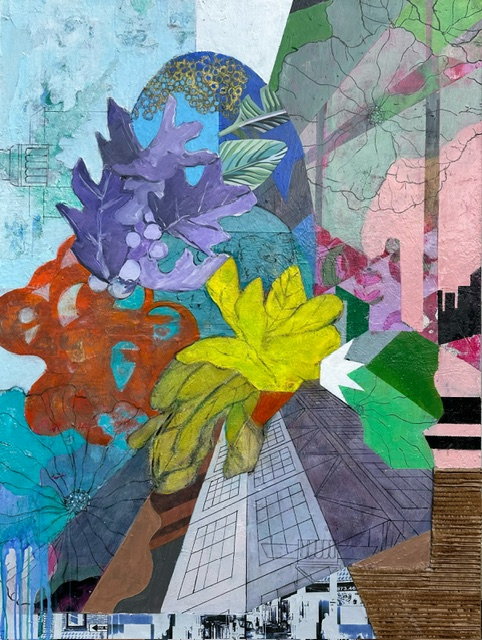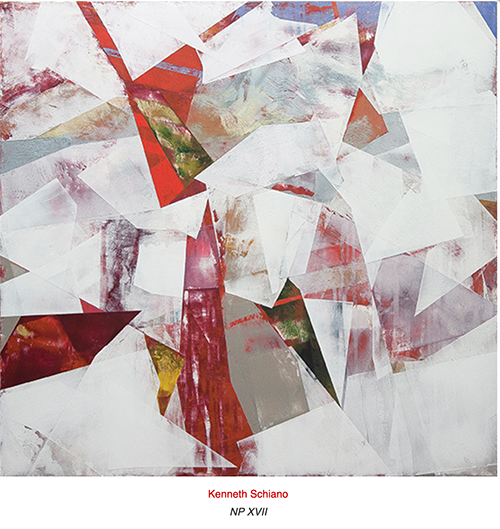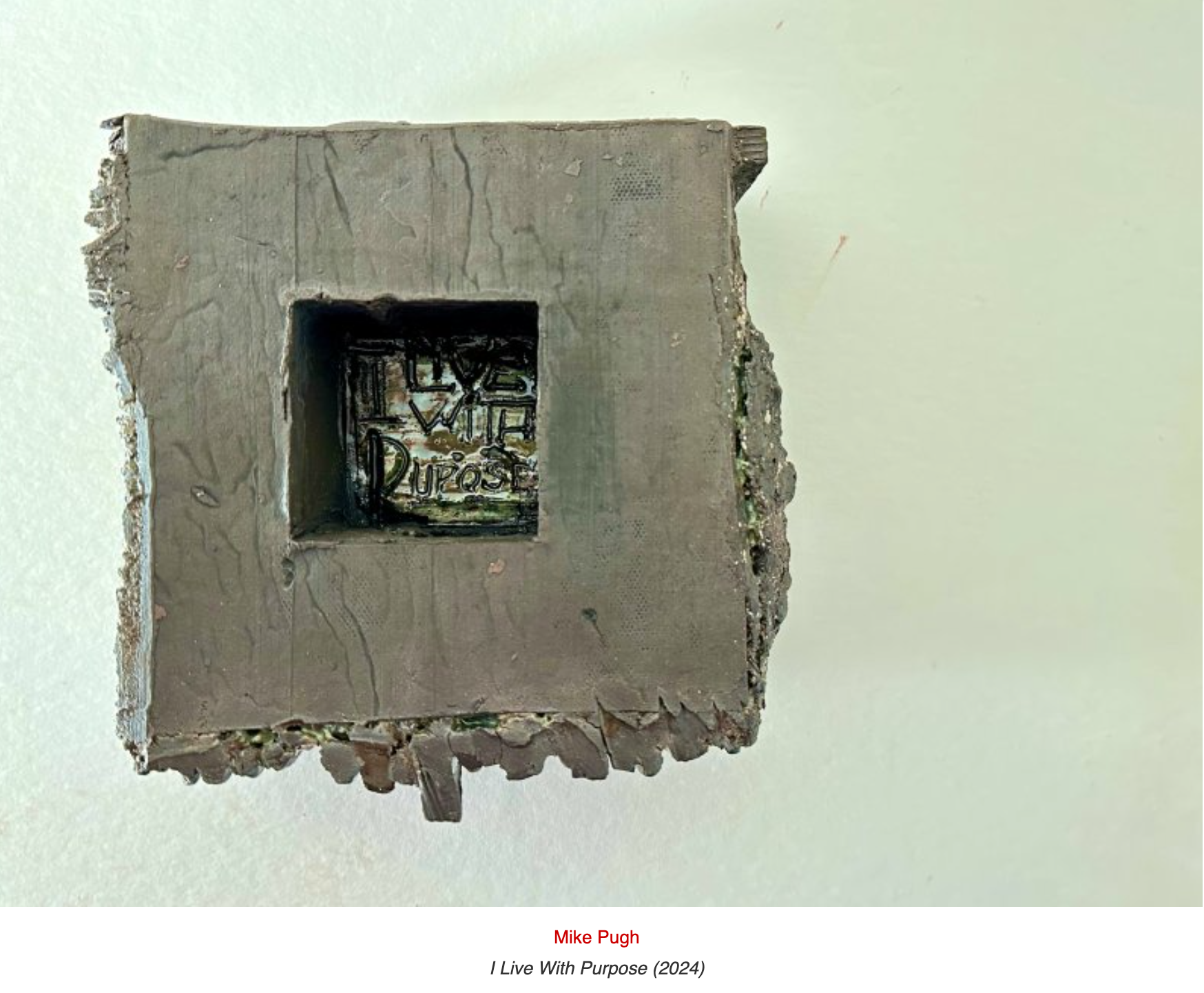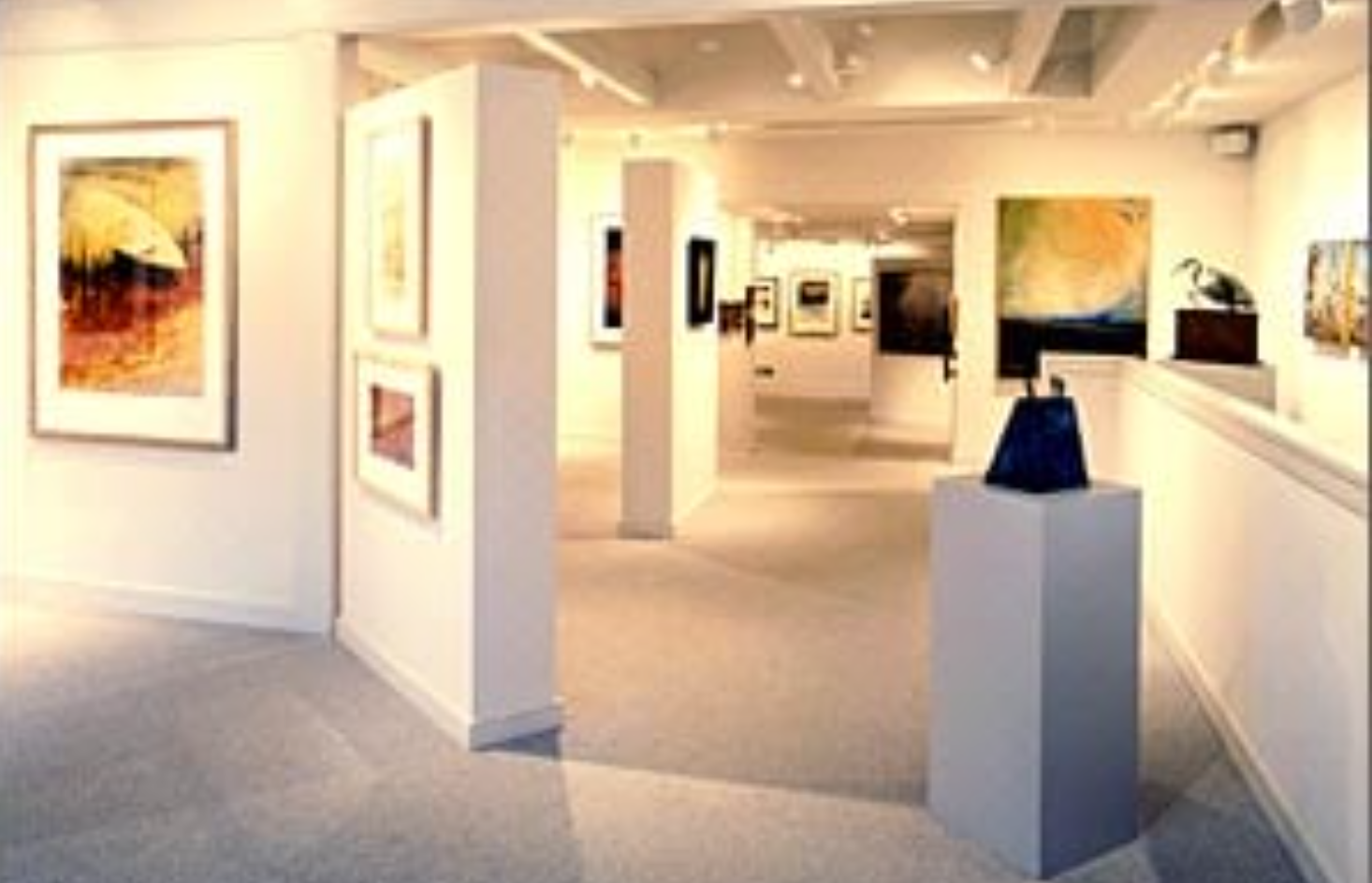February 10 — March 18, 2024
FOREWORD:
How is it conceivable that a collective of thoughtful individuals would acquire famously-challenging degrees in Architecture, learn the practical trade of Architect, and then choose working careers as producers of Art that we can find at the Massoni Gallery? Does knowing about their shared technical and aesthetic training lead us to observe a common approach among the artists? Can this knowledge help us better-appreciate these fine works in the Massoni Gallery? Read on.
“Like the spider with its web, so every subject weaves relationships between
itself and particular properties of objects; the many strands are then woven together and finally form the basis of the subject’s very existence.”
-Jakob von Uexküll
When Carla Massoni approached me to consider these reasonable questions around the diverse artists she selected for Art+Architecture.2, I thought she was on to something well-worth exploring as I too am among this crowd. The better architects are the connective web between all aesthetic pursuits and the science behind mathematics, engineering, and logical problem solving. As architecture students, we mastered a structured process of observation, analysis, model building, and visual communication that began with a blank page and a line (a perfectly-drawn technical-pen line at that). Line weight, edges, corners, and visual relationships were the stuff of design critiques. Over time, that line grew more complex and loaded-with-meaning to embrace contradiction and to describe our uncommon view of the world.
Space, Structure, Shadow and Form matter. For me on the West Coast, foundational pedagogy was steeped in Cubist and Bauhaus constructivism so that we could only-then begin to deconstruct what we thought we knew. Other architecture programs focused on analysis of ideal typologies and formal models that were turned-and-flipped to synthesize into something new. Yes, we all learned AutoCAD and other software. Yet, we were immersed in a hands-on design process that used endless layers of yellow tracing paper and emphasized a rigorous refinement through an exciting process of iterations and experimental transformation of a first idea.
Attention was paid to the balance of shade and shadow in all work (chiaroscuro in Italian, notan in Japanese). When you look at the artist works in this exhibition, you can see that depth of process-driven rigor and layering. These are not impressionistic or spontaneous works!
One can’t help but observe that Nature and our own human journey of imagination are the primary subjects of the artworks on view. After engaging with the artists to find out why, I went back to the architectural theory books we studied decades ago to seek answers. I found a direct symmetry that emphasizes observation of our natural world. There’s a vibrant dialectic that emerges between illusive manmade notions of constructed order and the deeper wisdom of the cosmos and subatomic particles as Einstein and Nietzsche well-understood. In these creative works, you will see the individual’s pursuit of an existential awareness (pursued via artworks) over concrete pragmatism (a building). In short, the artworks are thrilling products of a life journey and process-driven exploration of all things. As Jon Mort exclaimed, “Architect-Artists chose the harder, more studied way”.
Jon Mort often constructs models of his conceptual work before realizing the final image with pencil on paper. His masterful delineation and ultra-

Jon Mort, Good Bones
precise rendering of ideal worlds and paradoxical assemblages is ankle-shaking. Mort is fascinated by the human desire to interpret Nature by constructing ideal worlds based on pure geometries (think Humanism of the Italian Renaissance). His work strives to achieve the ideal-yet-impossible total visual balance of light and color (scientific photonics called albedo). Good Bones evokes the familiar circle-in-square model of human “perfection”. Yet, Nature’s perfect structures of skull, hummingbird, egg, and nest represent true perfection. Albedo is manifested with the balance between the white bone and red field. This work is not so much ironic as honest and raw in its optimism, and also defiance, of our assumptions of the built environment around us.

Elizabeth Casqueiro, Traces of Absence
Elizabeth Casqueiro layers polychromatic acrylic and ink forms at all scales to evoke the naturalistic, storied, and drafted elements that go into constructing a sense of place. These impactful places (“gateways”) are celebrated via carefully-rendered elements that give a time-traveling, dynamic brilliance to each work. Visual balance is adeptly achieved in the harmony of volumes and forms at various dimensions and perspectives. Traces of Absence is sensuous in the natural elements of rose-tinted hibiscus flowers (inspired by her mother’s garden) and memory-rich amethyst aerial-view forms. It is deeply meaningful with references of perhaps Casqueiro’s hometown in Portugal, an international airport gateway of life transitions, or a flow of fragments that evoke larger associations. We feel as part of this flow. The composition is carefully anchored into a one-point perspective that evokes the camera obscura with a single vanishing point into infinity. Or, is it?
Eve Stockton is inspired by the natural world both observed and imagined. Her imagery draws from the latest science of the cosmos and our primordial origins. Stockton’s large-scale woodcut prints are the result of intensive hand-carving followed by print-making with Susan Goldman at Lily Press, Rockville, MD. To date, Stockton has over fifty 36″x36″, carved wood blocks which she uses to build her imagery in endless color combinations. Her past architectural background has given Stockton a visual sense of geometry and balance in her nature-based prints. The consistent three-foot-square module in her system allows for engaging groupings or ensembles.
Three Inlet prints each evoke a wooded cove caught between sky and the water. Notice how the individual prints have cloud forms that tessellate into the neighboring print in a pleasing and dynamic rhythm. The Inlet triptych of moss, cranberry, and robins egg blue presents colors that both sooth and challenge.
 Ken Schiano (at the High Street Massoni Gallery in An Accumulation of Difficult Things) uses powdered pigments and cold wax to build-up (and then scrape-away) in an action work that he associates with archeology of the cosmos. Symbolically, the pigments represent matter trapped in wax. This is the collected debris of creative making and also everything, really. Schiano’s artworks are the product of accumulation as-well-as arch reveal. Activated worlds of opaque and luminous polygons and orb-like “Cryptids” allow various interpretations while maintaining a sense of Schiano’s strength of concept. NP XVII is an iteration from a body of work that evolves from the previous work, Schiano’s “muse”. Powerful red charges toward the viewer, while the quiet hint of gentle lavender recedes. Diagonal features of earthy green and ochre direct the eye and anchor the dynamism into a pleasing composition. The actual subjects of the work are the negative spaces that simultaneously create animated movement and depth. Compositions and color chords build on the previous artwork in an accumulation of life works that tell his story and ours too.
Ken Schiano (at the High Street Massoni Gallery in An Accumulation of Difficult Things) uses powdered pigments and cold wax to build-up (and then scrape-away) in an action work that he associates with archeology of the cosmos. Symbolically, the pigments represent matter trapped in wax. This is the collected debris of creative making and also everything, really. Schiano’s artworks are the product of accumulation as-well-as arch reveal. Activated worlds of opaque and luminous polygons and orb-like “Cryptids” allow various interpretations while maintaining a sense of Schiano’s strength of concept. NP XVII is an iteration from a body of work that evolves from the previous work, Schiano’s “muse”. Powerful red charges toward the viewer, while the quiet hint of gentle lavender recedes. Diagonal features of earthy green and ochre direct the eye and anchor the dynamism into a pleasing composition. The actual subjects of the work are the negative spaces that simultaneously create animated movement and depth. Compositions and color chords build on the previous artwork in an accumulation of life works that tell his story and ours too.
Mike Pugh is a ceramic artist who believes it is important to tell our story through intentional forms and honest text. His work is architectural and regional and often site-specific. Each work is a vessel that contains multitudes at a distance and at close observation. His interest in honest folk art and also Brutalist architecture (as in “brutally honest”) inspire ruddy, hand-hewn works of craft. I Live With Purpose. is a functional work as an ikebana vessel. It conveys as a constructed architectural model of a larger concept and narrative of some scale. It’s black like ink on a white page. It hovers and reveals itself in moments for those who touch it.
regional and often site-specific. Each work is a vessel that contains multitudes at a distance and at close observation. His interest in honest folk art and also Brutalist architecture (as in “brutally honest”) inspire ruddy, hand-hewn works of craft. I Live With Purpose. is a functional work as an ikebana vessel. It conveys as a constructed architectural model of a larger concept and narrative of some scale. It’s black like ink on a white page. It hovers and reveals itself in moments for those who touch it.
Jon Mort: Bachelor of Arts in Studio Art at Franklin & Marshall College (Lancaster, PA), MArch (Masters of Architecture) at Rhode Island School of Design, RISD (Providence, RI)
Elizabeth Casqueiro: MArch at Catholic University (Washington, DC), Bachelor of Arts in Design at Instituto de Arte e Design, IADE (Lisbon, Portugal), Art Studies at Central Saint Martin’s College of Art (London, United Kingdom), the Corcoran College of Art & Design (Washington, DC) and the Washington Studio School (Washington, DC); and also Masters of International Business Management at University of Westminster (London, United Kingdom)
Eve Stockton: MArch, Yale School of Architercture (New Haven, CT), Bachelor of Arts in
Architecture & Urban Planning with a minor in Fine Arts, Princeton University (Princeton, NJ)
Ken Schiano: BArch (Bachelors of Architecture) at Cooper Union (New York, NY)
Mike Pugh: BArch and Bachelor of Arts in History, minors in Italian and Interdisciplinary General Education at California Polytechnic University (Pomona, CA), graduate studies in STEM Education at Johns Hopkins University (Baltimore, MD)
Massoni Art @ Cross Street Gallery February 10 — March 18, 2024
Mike Pugh’s work in Historic Preservation led to adventures in documenting America’s first rocket test stand, a teaching career in urban schools, founding community gardens, and he even worked at a grain elevator. Pugh’s reference-rich ceramics have won various awards and can be found worldwide.
203 High Street & 113 South Cross Street 410.778.7330 • 410-708-4512 • Chestertown, Maryland
For more about the exhibit and MassoniArt, go here.




Write a Letter to the Editor on this Article
We encourage readers to offer their point of view on this article by submitting the following form. Editing is sometimes necessary and is done at the discretion of the editorial staff.